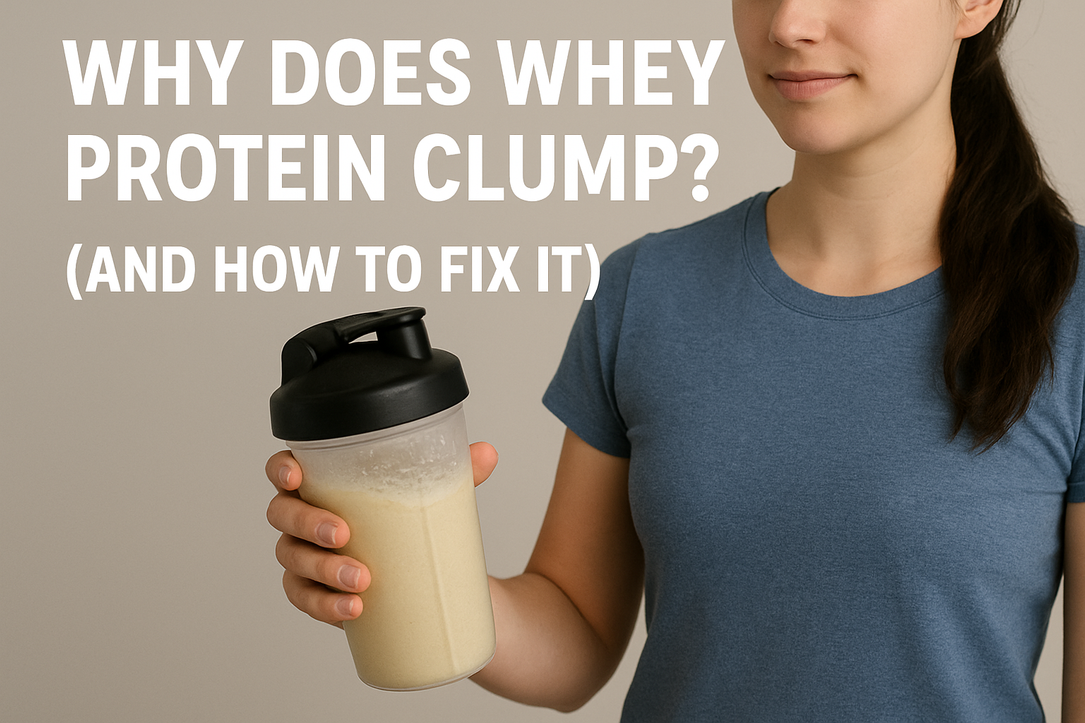Posted by Kaha Nutrition on 18th Jul 2025
Why Does Whey Protein Clump? (And How to Fix It)
If you’ve ever mixed whey protein into water or milk and ended up with stubborn little clumps floating on the surface, you’re not alone. It’s one of the most common frustrations for gym-goers and health enthusiasts alike. But why exactly does whey protein clump? The answer lies in food science — and the good news is, it’s completely preventable.
The Science of Clumping
1. Protein Structure and Hydration
Whey protein is a collection of proteins derived from milk. Proteins have complex structures that don’t immediately absorb water. When you dump whey protein powder directly into liquid, the outer layer of the powder particles gets wet and forms a sticky coating. This creates a barrier that keeps the inside of the clump dry.
2. Hydrophobic (Water-Repelling) Nature
Proteins are made up of amino acids, some of which are hydrophobic (they don’t like water). When these are exposed on the surface, the powder resists dissolving. Instead of dispersing smoothly, they cling together.
3. Temperature Trouble
Liquid temperature also plays a role. Extremely cold water slows down the dissolving process, making clumps more likely. On the flip side, very hot water can actually cause the proteins to denature (change shape), which leads to coagulation and stubborn clumps.
4. Static and Air Pockets
Protein powder is very fine and can hold onto static electricity. Combine this with trapped air in the powder, and you get tiny “bubbles” that don’t want to sink or dissolve right away.
Common Mixing Mistakes That Cause Clumps
-
Adding powder before liquid: If the powder sits at the bottom of your cup and you add liquid on top, it immediately cakes up.
-
Using very hot or very cold liquid: Both extremes make it harder for whey to dissolve smoothly.
-
Poor mixing tools: Stirring with a spoon rarely provides enough force to break apart clumps.
How to Prevent Clumping
Add Liquid First
Always pour your liquid into the shaker or blender before adding whey protein. This helps the powder disperse rather than form sticky balls.
Use a Shaker Bottle or Blender
Shaker bottles have a wire whisk or mixing ball that breaks up clumps. A blender guarantees a silky-smooth shake.
Stick to Lukewarm or Room-Temperature Liquid
Mixing in room-temperature liquid first, then adding ice afterward, helps the protein dissolve more easily without clumping.
Sift the Powder
If your protein is especially clumpy, running it through a small sieve before mixing ensures it disperses evenly.
Don’t Overload the Cup
Too much powder for too little liquid almost guarantees clumps. Stick to the recommended scoop-to-liquid ratio.
Bottom Line
Clumping happens because whey protein is a complex, water-resistant molecule that doesn’t instantly dissolve. Factors like poor mixing, liquid temperature, and improper ratios can make things worse. With the right technique — liquid first, room-temperature liquid, and a shaker or blender — you can enjoy smooth, creamy shakes every time.

